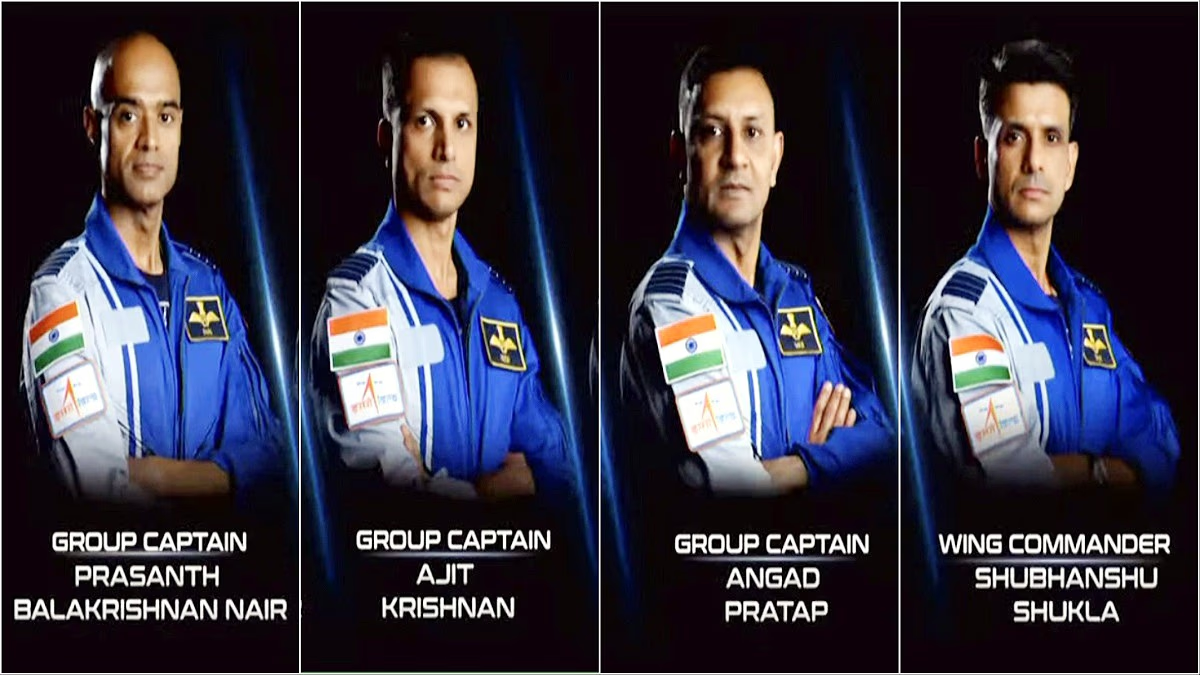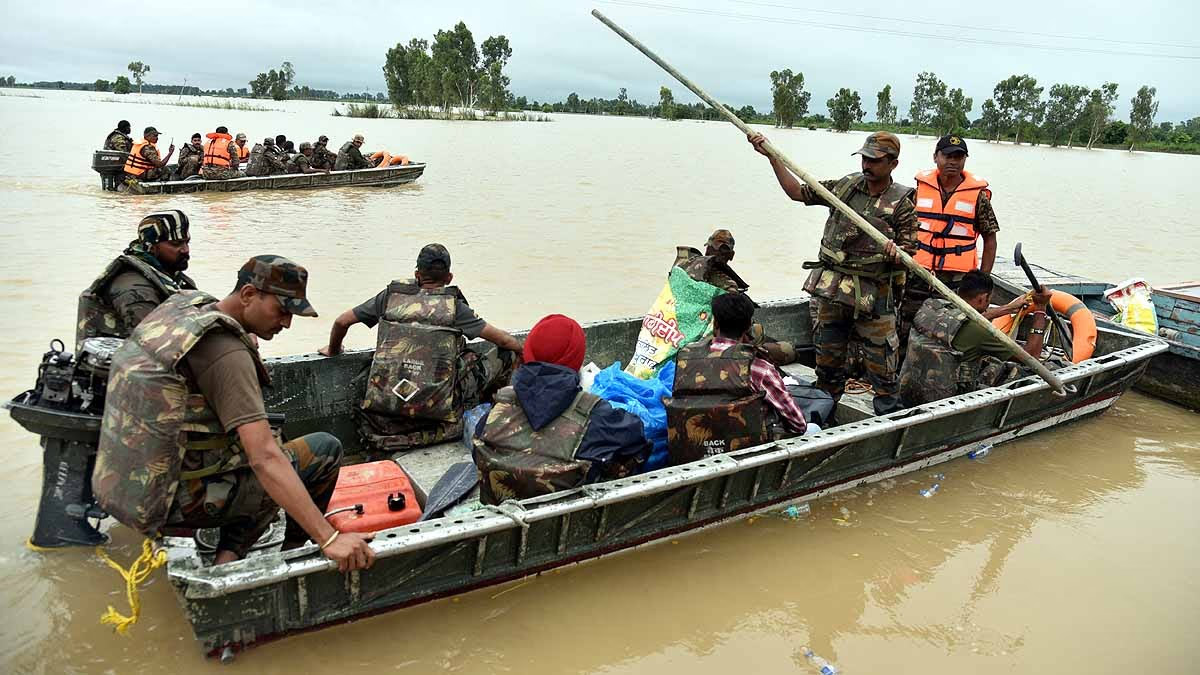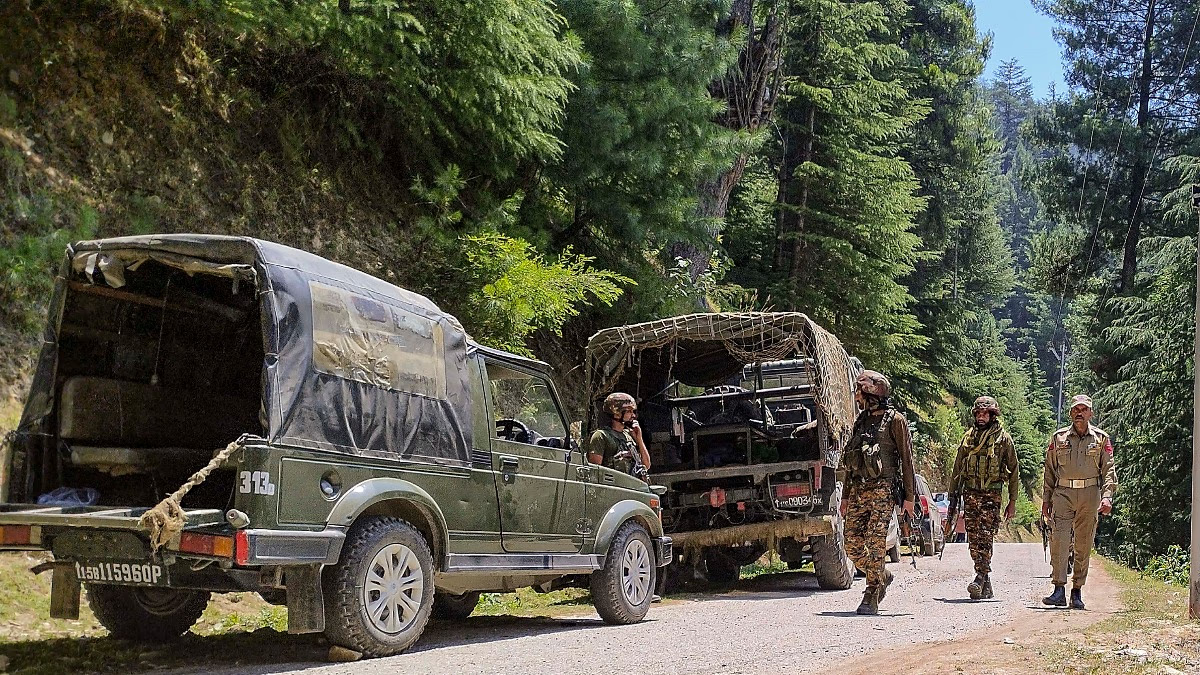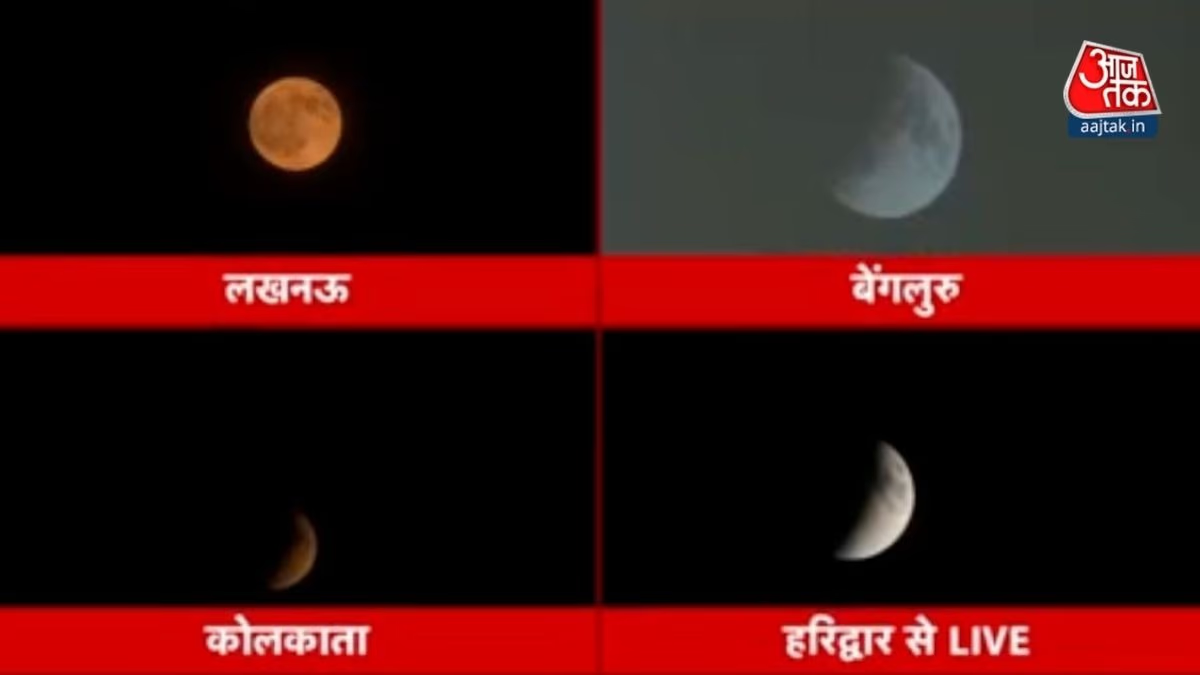On August 23, 2024, India will celebrate National Space Day. This date commemorates the landing of ISRO's Chandrayaan-3 near the moon's south pole last year. Nationwide preparations are underway for National Space Day. ISRO Chairman Dr. S. Somanath has urged everyone to participate in the celebrations.
Read also: National Space Day 2024: Celebrating the Day Chandrayaan-3 Landed on the Moon
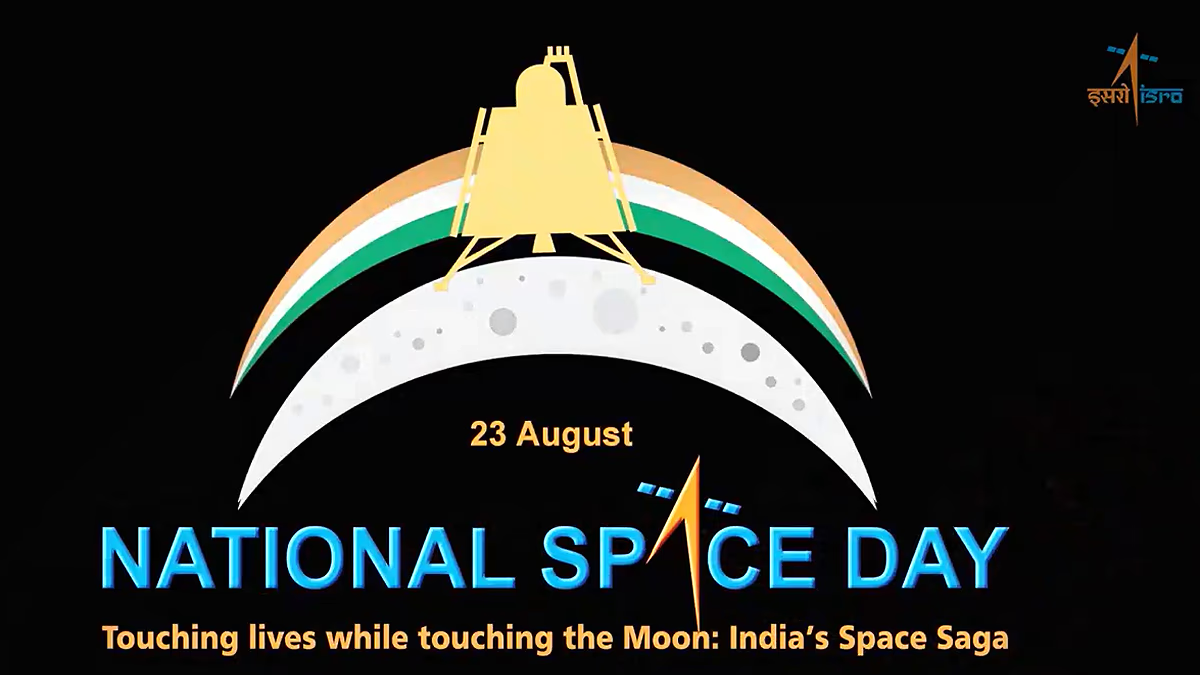
Source: aajtak
Watch the Training Video of the Four Air Force Pilots Selected for Gaganyaan..
Let's revisit the journey of Chandrayaan-3...
At 5:20 PM on August 23, 2023, ISRO commenced the live streaming of Chandrayaan-3's landing. Millions were glued to YouTube, Facebook, and ISRO's site as the scientists announced the imminent landing. People eagerly watched ISRO’s stream, trying to interpret the assorted charts and graphs.
To help you understand, here’s a simplified chart highlighting the key aspects of the landing. From the landing site, Chandrayaan-3 was 30 kilometers above the surface and 745.6 kilometers away horizontally. The landing sequence was divided into four phases.
Also read: Parts for Chandrayaan-4 to be Assembled in Space… Major Announcement by ISRO Chief
Rough Braking Phase:
The lander descended from a height of 30 km to a distance of 7.4 km. It took 690 seconds, or about 11.5 minutes, to cover this stage. During this time, Chandrayaan traveled 713 km, starting at a speed of 1.68 km/sec, reduced to 358 meters/sec. The horizontal speed was 0.61 meters per second.
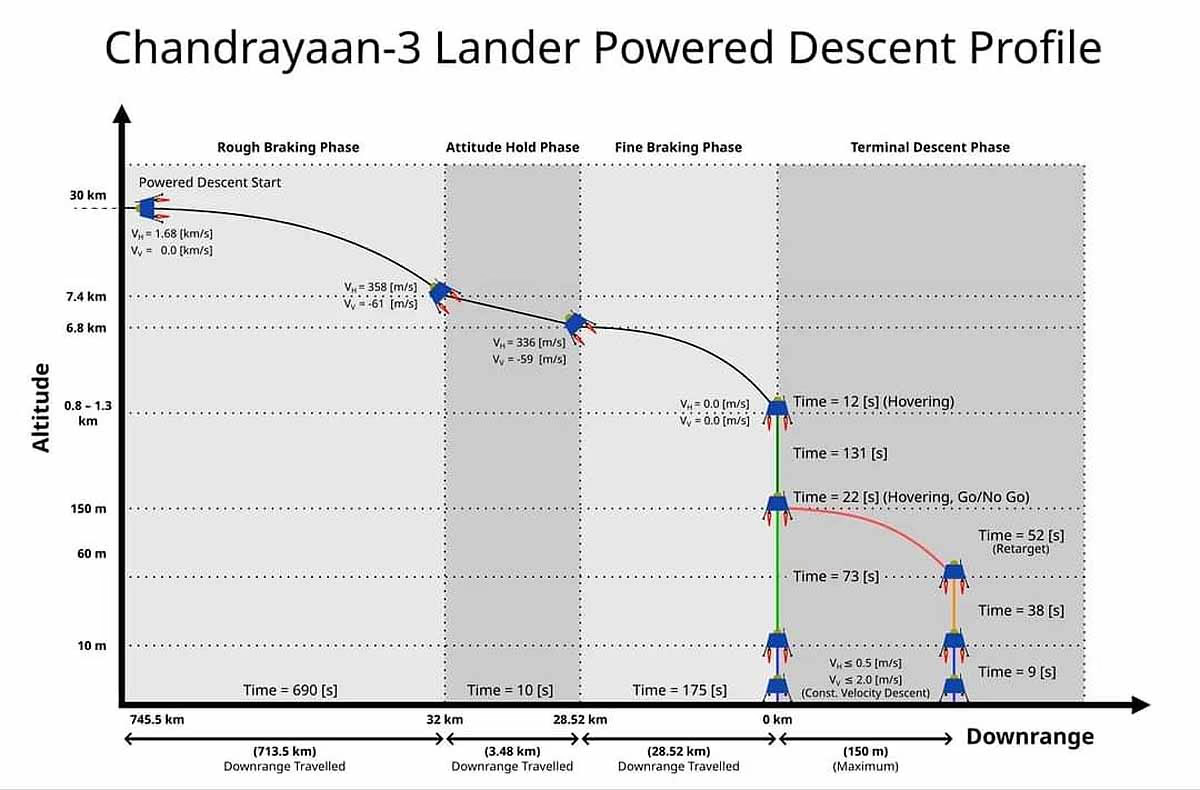
Source: aajtak
Altitude Hold Phase:
The lander covered a distance from 32 km to 28.52 km at a height of 6.8 km, which took just 10 seconds. During this phase, the descent speed was 336 meters/sec and the horizontal speed was 0.59 meters per second.
Fine Braking Phase:
This phase involved descending from 28.52 km to 0 km, right above the landing region at a height of 0.8 to 1.3 km. The lander descended like a helicopter, with its legs extended downward. It descended to 150 meters at a speed of 2 meters per second. This process took 175 seconds, about three minutes.
Also read: China Launched PAK Satellite… Does Anyone Know About Pakistan’s Space Agency Before ISRO?
Terminal Descent Phase:
The final phase began from a height of 150 meters, descending straight to the surface. The lander descended horizontally at 0.5 meters per second and vertically at 2 meters per second.
It took 73 seconds to descend from 150 meters to 60 meters, with 52 seconds spent on re-targeting for a safe landing spot. From 60 meters to 10 meters, it took 38 seconds. The final 9 seconds completed the descent from 10 meters to the surface.
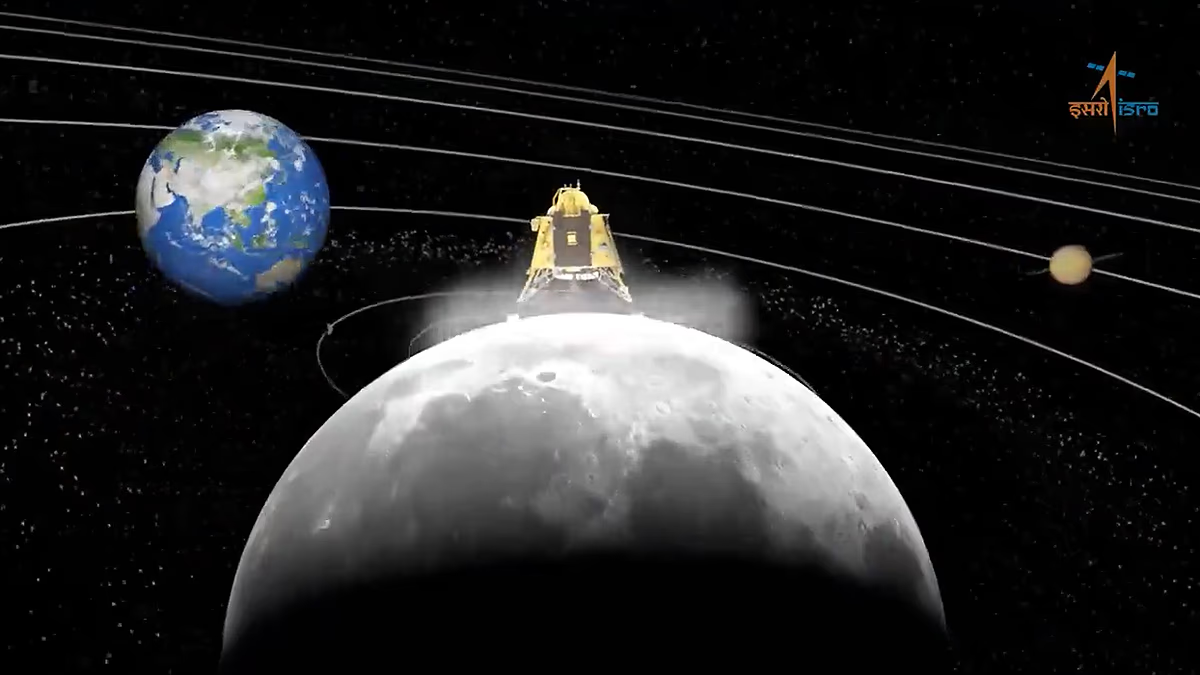
Source: aajtak
With precision and accuracy, Vikram Lander gently touched the moon's surface, marking a successful mission. After three days, when the dust settled, Pragyan Rover emerged.
Get to know our astronauts...
These are test pilots from the Indian Air Force, each having flown almost all fighter jets. Let’s meet these four remarkable individuals and learn about their backgrounds and education.
Also read: GSAT N2 Satellite: ISRO’s New Satellite to be Launched by SpaceX… Enhancing Broadband Connections
Group Captain Prashant Balakrishnan Nair
Born on August 26, 1976, in Thiruvazhiyad, Kerala, he completed training at NDA and has been awarded the Sword of Honor from Air Force Academy. On December 19, 1998, he joined the Air Force's fighter jet program. He is a CAT-A class flying instructor and test pilot with around 3000 hours of flying experience.
Prashant Nair has flown aircraft such as Su-30MKI, MiG-21, MiG-29, Hawk, Dornier, and AN-32. He is an alumnus of United States Staff College, DSSC Wellington, and FIS Tambaram. He also commanded the Sukhoi-30 squadron.
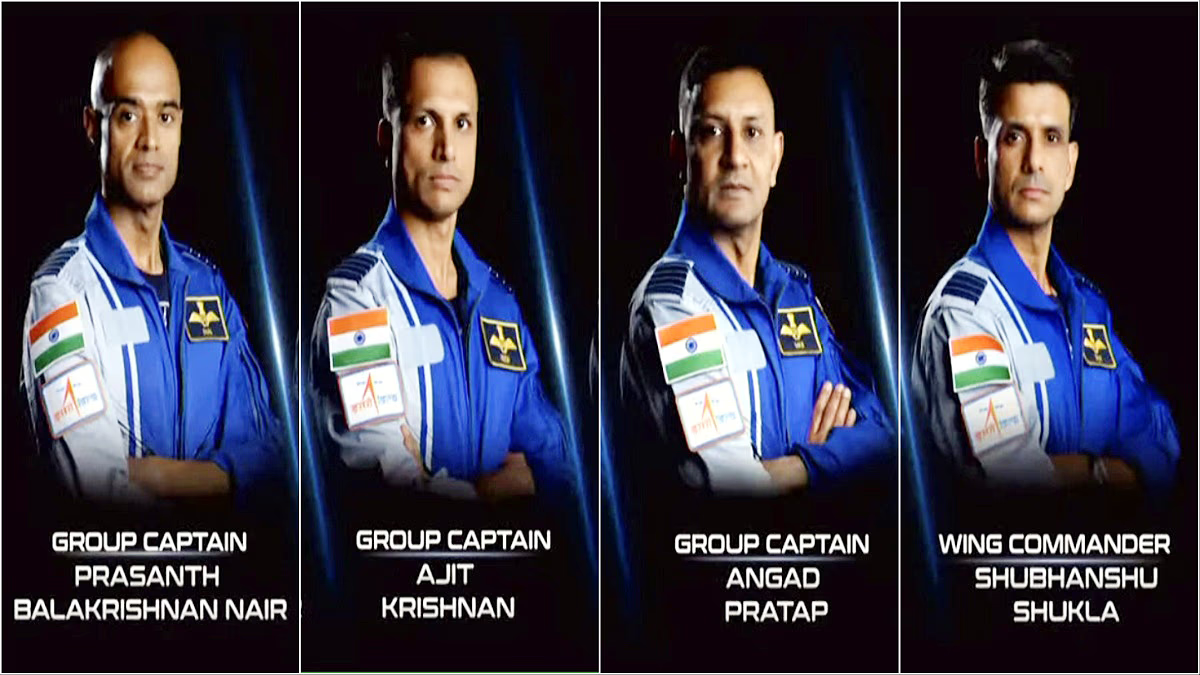
Source: aajtak
Group Captain Ajit Krishnan
Born April 19, 1982, in Chennai, Tamil Nadu, Ajit completed military training at NDA and received a Gold Medal from the President and Sword of Honor from the Air Force Academy. He joined the Air Force’s fighter stream on June 21, 2003. Ajit has 2900 hours of flying experience as a flying instructor and test pilot. He has piloted aircraft like Su-30MKI, MiG-21, MiG-21 Bison, MiG-19, Jaguar, Dornier, and AN-32. He is an alum of DSSC Wellington.
Group Captain Angad Pratap
Born on July 17, 1982, in Prayagraj, Uttar Pradesh, Angad Pratap's military training was completed at NDA. He joined the Air Force’s fighter stream on December 18, 2004 and has about 2000 hours of experience as a flying instructor and test pilot. Angad has flown Su-30MKI, MiG-21, MiG-29, Jaguar, Hawk, Dornier, and AN-32 fighters and aircraft.
Group Captain Shubhanshu Shukla
Born October 10, 1985, in Lucknow, Shubhanshu completed his military training at NDA. He joined the Air Force’s fighter stream on June 17, 2006. He is a fighter combat leader and test pilot with 2000 hours of flying experience. Shubhanshu has piloted Su-30MKI, MiG-21, MiG-29, Jaguar, Hawk, Dornier, and AN-32 fighters and aircraft.
